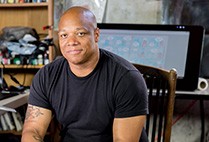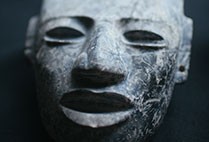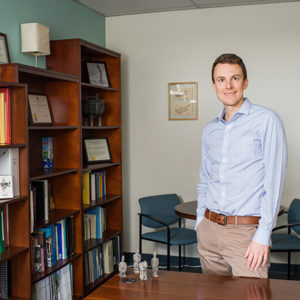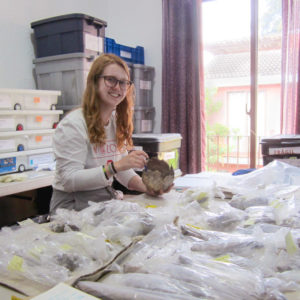It’s a sunny summer Sunday, and the Street of the Dead looks particularly lively as archaeologist David Carballo makes his way across. The broad thoroughfare cuts a one-and-a-quarter-mile swath through the heart of the ancient Mesoamerican city of Teotihuacan, passing three monumental stone pyramids named after the sun, the moon, and the mythological Feathered Serpent, and gaggles of photo-snapping tourists. About 30 miles northeast of Mexico City, Teotihuacan—or Teo, as archaeologists call it—is a UNESCO World Heritage Site and the most visited archaeological ruin in the Western Hemisphere. Today, as in ancient times, the center of Teo is a circus of commerce. One vendor hawks colorful clay whistles that trill a birdsong or rumble a jaguar’s growl. Another sells dangling pendants of serpents, skulls, plastic hearts, and peace signs. A group of friendly tourists stops Carballo, waggling their iPhones toward him, asking him to take their photo. They lean together, grinning from ear to ear, pyramids looming behind them.
Carballo, a College of Arts & Sciences assistant professor of archaeology and author of Urbanization and Religion in Ancient Central Mexico (Oxford University Press, 2015), has studied Teotihuacan since 1999, trying to learn how this ancient metropolis arose around the first century BCE and flourished for more than 600 years. He does this not by studying the grand pyramids and other remnants of Teo’s elite, but by examining a group of working-class neighborhoods in a district called Tlajinga. Carballo, who teaches a class called Archaeology of Cities and whose work is funded by a three-year, $238,000 National Science Foundation (NSF) grant, says that understanding the economics and social structure of Tlajinga will give him clues to the economics and social structure of the city as a whole. That knowledge, in turn, may inform a host of questions about our modern cities: Who migrates to cities and why? How do rulers build and maintain complex infrastructure? And perhaps most crucial for our diverse society, how can a government attract strivers from many different cultures and mold them into a new, unified people? In other words, how can we all get along?
Continue reading on BU Research

















































This is a wonderful article. I visited “Teo” many years ago and it still rests in my memory as an amazing experience. I found the little reference to ants bringing up obsidian flakes a wonderful piece of history “sleuthing.” I am now desperate to return and walk it all over again.